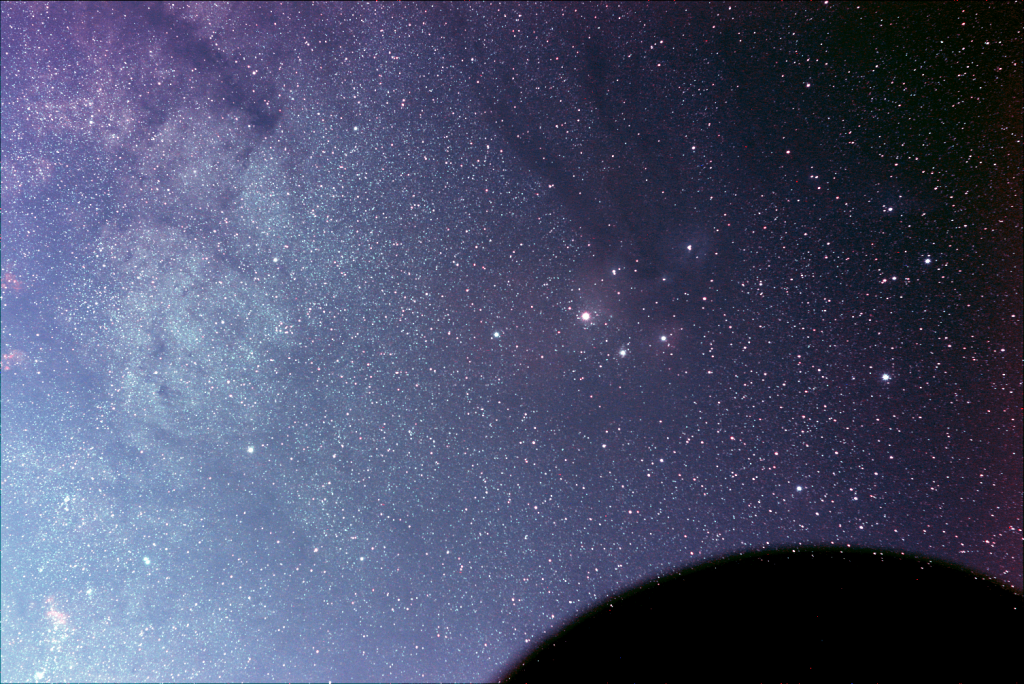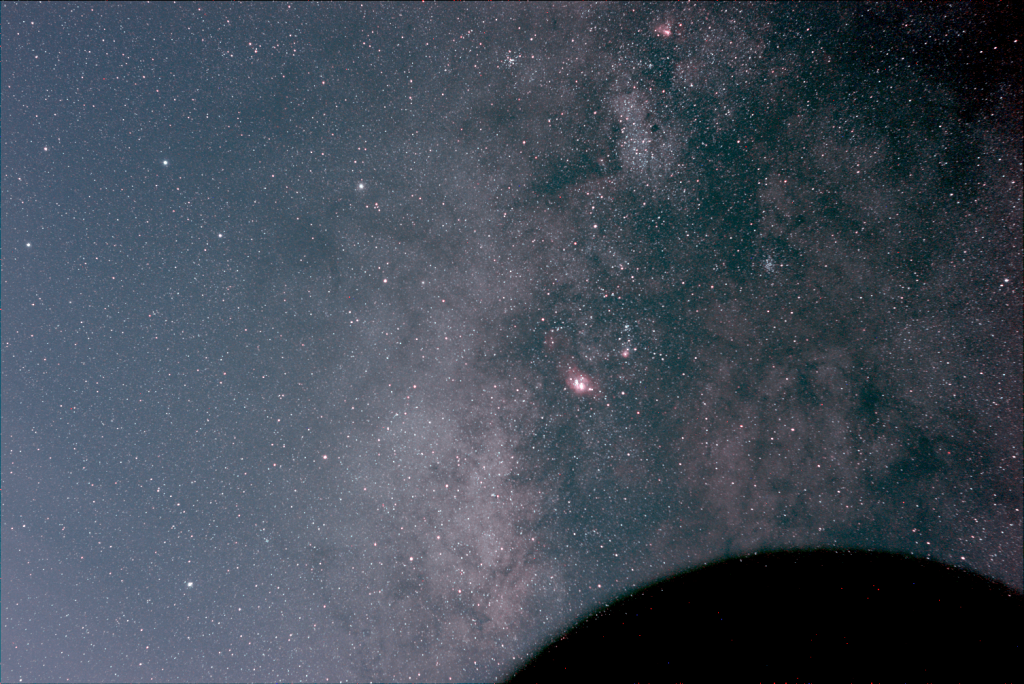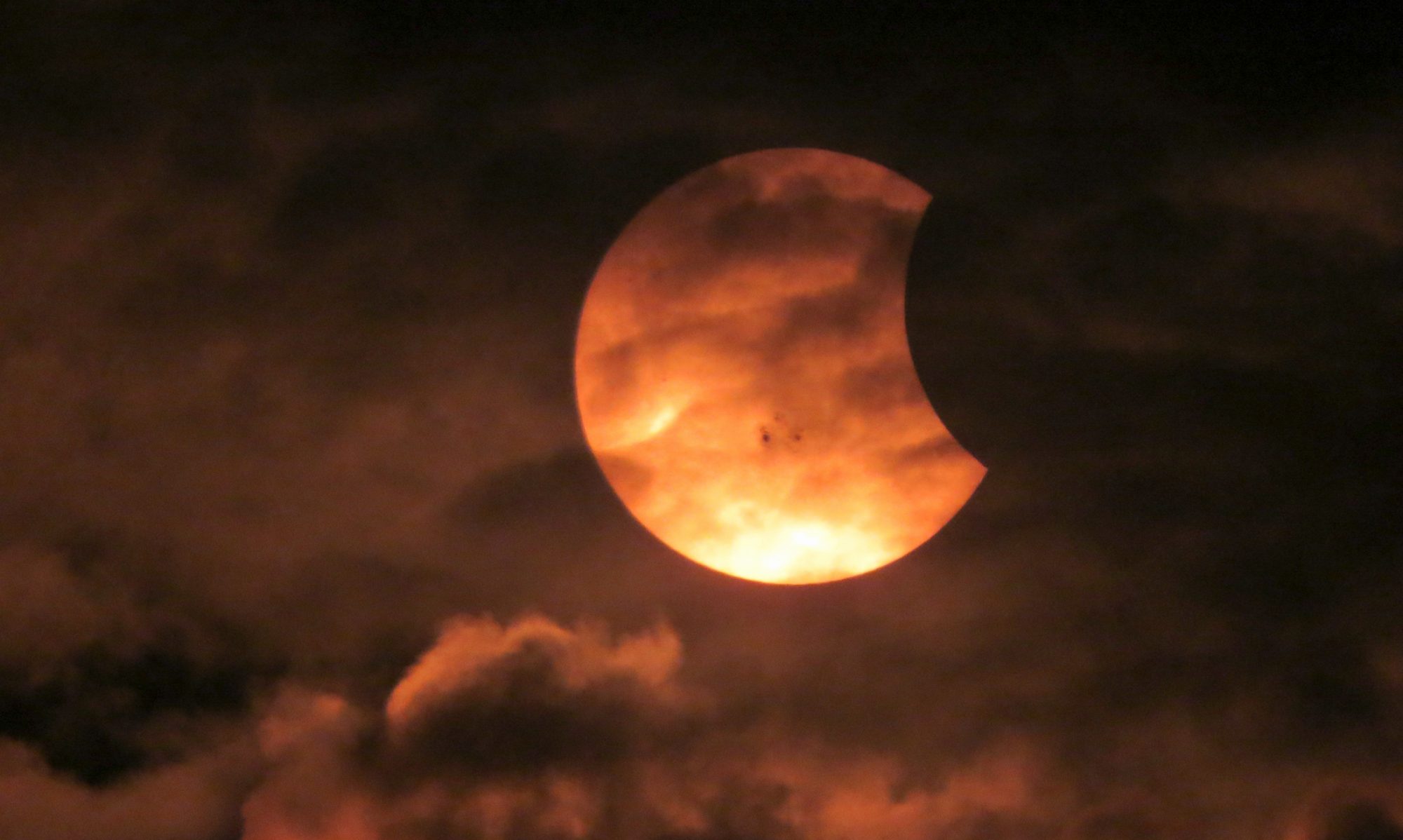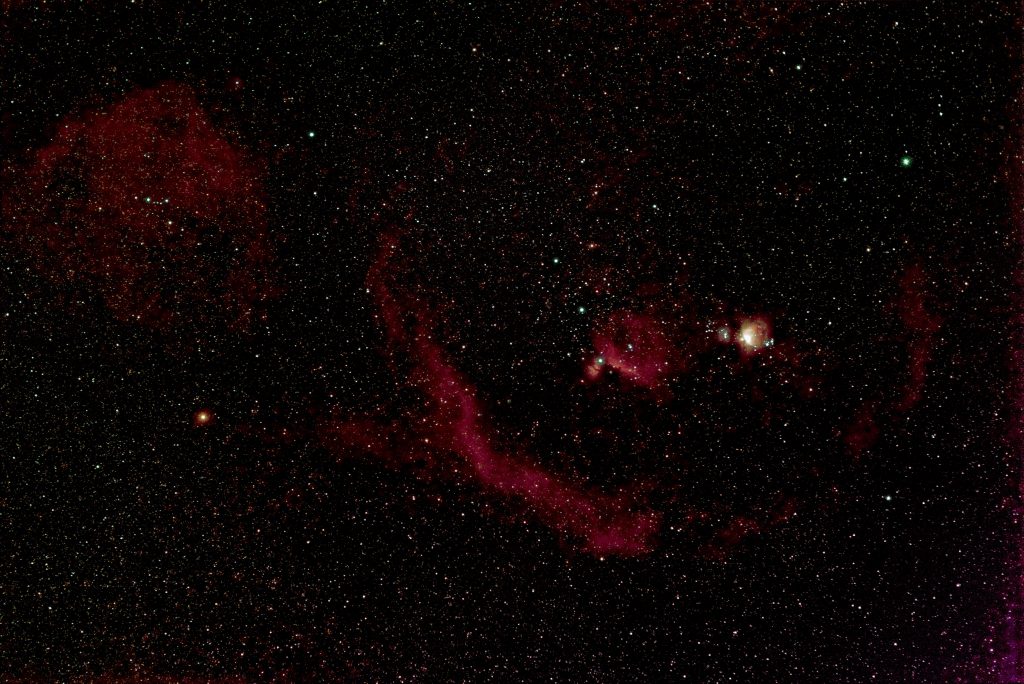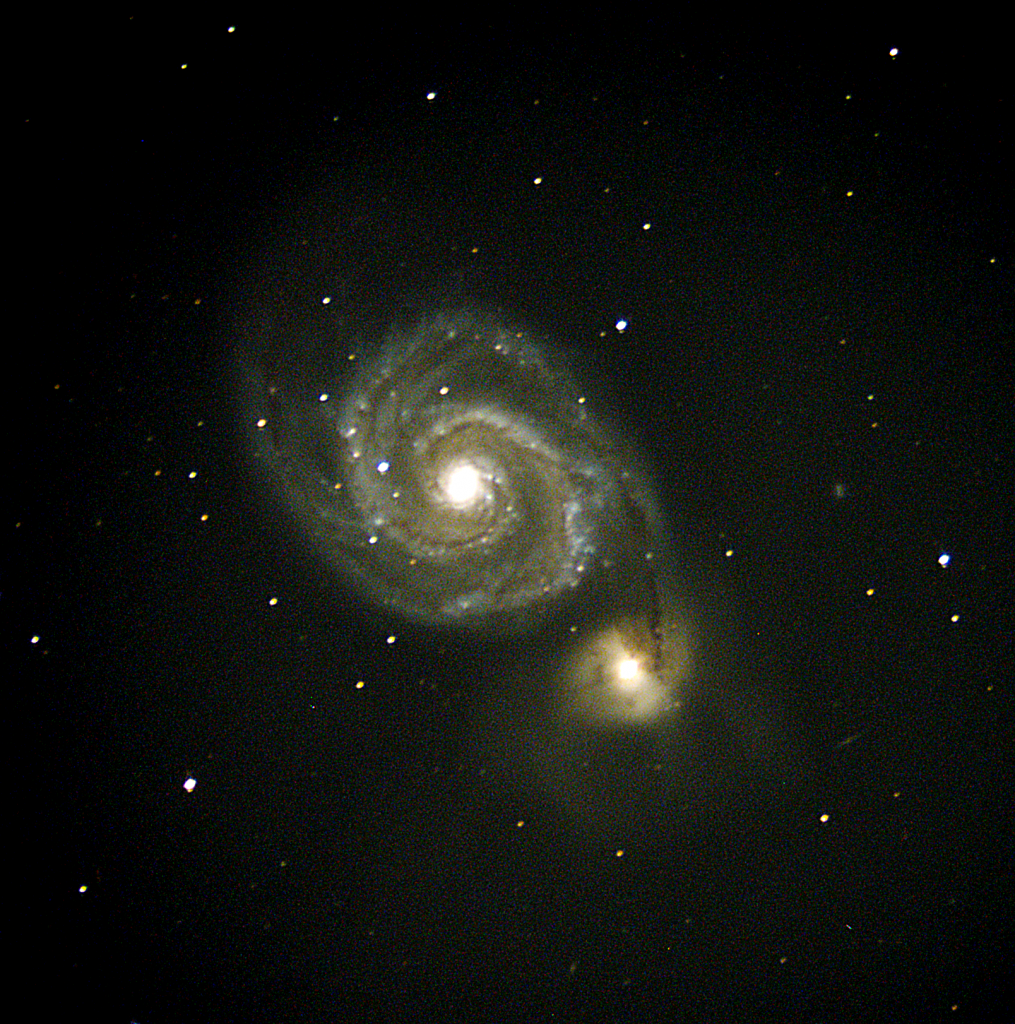Here are a couple images taken in the early hours of Saturday May 30, 2020 from the River Ridge Observatory. The Moon didn’t set until 2 AM so I spent several hours essentially piddling around and then stayed up all night. I used my Canon Rebel 800D with a 50mm f/1.8 lens riding on my 11″ SCT while it was busy imaging something else. I used a so called “city light suppression” filter to try to mitigate some light pollution. By the way, this was to the south from the RRO and Little Rock was to the southeast. Each image is a combination of six 5 minute frames then processed in Photoshop. My Photoshop skills are still a work in progress. The CLS filter tends to cast a green tint so that had to be removed. The dark circle in the lower right is the telescope.
